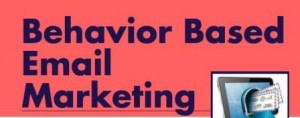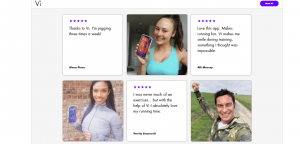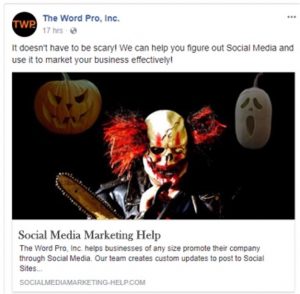Should you use whitelists or blacklists, and does it matter? In the age of fake news, says columnist Kevin Lee, it should matter a lot to programmatic advertisers.
 Is your strategy whitelist, blacklist or no-list? Unfortunately, programmatic display can be quite complex regardless of which DSP (demand-side platform) you use to execute your buys.
Is your strategy whitelist, blacklist or no-list? Unfortunately, programmatic display can be quite complex regardless of which DSP (demand-side platform) you use to execute your buys.For many years, media buyers and ad operations teams used blacklists when accessing programmatic display inventory. If an undesirable site showed up in reporting, it would be blacklisted for the future of the campaign.
However, a proliferation of fake news — and sites with a negative reputation — is having a profound impact on how on brands advertise, even as readers flock to reach the “news” on the sites. If brands are sensitive to the fake news issue, those sites or articles need to be excluded.
In paid search (thought of by many as the first programmatic form of media — even in the early days with GoTo.com) the level of control over syndication was fairly blunt and was more of a whitelist method. You’d choose whether or not to include syndication partners (all at the same time) or not.
In the current media environment, a strong argument can be made for embracing a whitelist mode of ensuring quality sites and placements. You can whitelist just a handful of top-notch sites and have access to a large amount of programmatic inventory — Yahoo, Weather.com, Gannett (USAToday), NY Times, Buzzfeed and others.
However, while the larger publishers control the lion’s share of available inventory in terms of programmatic display and video, there’s still a lot of available display and video inventory out there from midsize and smaller publishers, and the CPM you’ll pay will be lower due to the flight to quality (brand-name publishers) happening out there now.
The kinds of impression and click quality problems that plague the display and video ecosystems fall into several categories, both human and bot-driven.
Whitelist vs. blacklist
This is where the whitelist vs. blacklist question arises; a whitelist includes a list of acceptable sites on which to run inventory (all others prohibited), while a blacklist denotes those sites where inventory is not to serve, ever.
You can create your own or use a third party to do the whitelist diligence for you at both the domain and page level. Sometimes one unsavory article can result in an unfortunate ad placement on an otherwise top-notch site.
As you work your way down the list of whitelist sites, smaller sites have challenges that the larger publishers don’t face:
- Less budget to implement filtering technology
- Less knowledge of best practices to reduce bot traffic
- No requirement for user authentication or login
Additionally, small publishers may be tempted to mix more bot traffic with their authentic traffic if they don’t believe advertisers (or agencies) will notice. Therefore, regardless of malice by the publisher, network and bot traffic outside of their control, some display and video ad publishers are more susceptible to invalid impressions and clicks.
Both whitelists and blacklists have their place in your ad-buying process. But in the world of “fake news” (where some publishers exist only to generate ad revenue from salacious content heavily shared through social media), your brands may want to distance themselves from adjacency to fake news or hateful content.
I had the pleasure of discussing the whitelist/blacklist issue with Marc Goldberg, CEO at Trust Metrics, a firm that “provides standardized or customized ratings and reviews of any site or page.” These ratings manifest themselves into a real-time whitelist or blacklist, depending on the needs of an advertiser.
As you might imagine, Trust Metrics has experienced a surge of interest in their site and page-scoring platform (given the increase in fake news and the implications of a brand showing up there regardless of the ad being retargeted). In contrast with bot traffic, fake news is actually likely to be human traffic generated by the viral sharing on social media, and even email.
When I specifically discussed the whitelisting option with Goldberg, he emphasized that: “Whitelisting used to be just about safety. In brand safety, the absence of swears and nudity equaled quality. We now believe quality also includes the presence of good publishing features (UX, UI, depth and breadth, ad clutter, layout and additional factors). Most bad guys don’t have quality sites and will not be selected to make the list.”
What struck me about many of the elements that telegraph “quality” in the whitelisting environment was their similarity to the factors Google used to influence quality score on the paid search side and organic rank in the organic side of the house. In a nutshell, they all put the reader/user first.
Because it only takes a short period of time and nearly zero cost to set up a fake news site, many experts in the programmatic ecosystem (both agency and client side) are looking to whitelists any time the client/advertiser feels uncomfortable with their ads showing up next to fake news content. Although it’s clear that the news is fake to anyone who bothers to check, millions of eyeballs consume this “news,” generating ad inventory.
Whether you choose to create your own whitelist by focusing on larger sites where the editorial meets your standards, or you use a third-party whitelist, you can’t simply ignore the problem if your brand or that of your client might be damaged by association.
Some opinions expressed in this article may be those of a guest author and not necessarily Marketing Land. Staff authors are listed here.
Marketing Land – Internet Marketing News, Strategies & Tips
(44)










